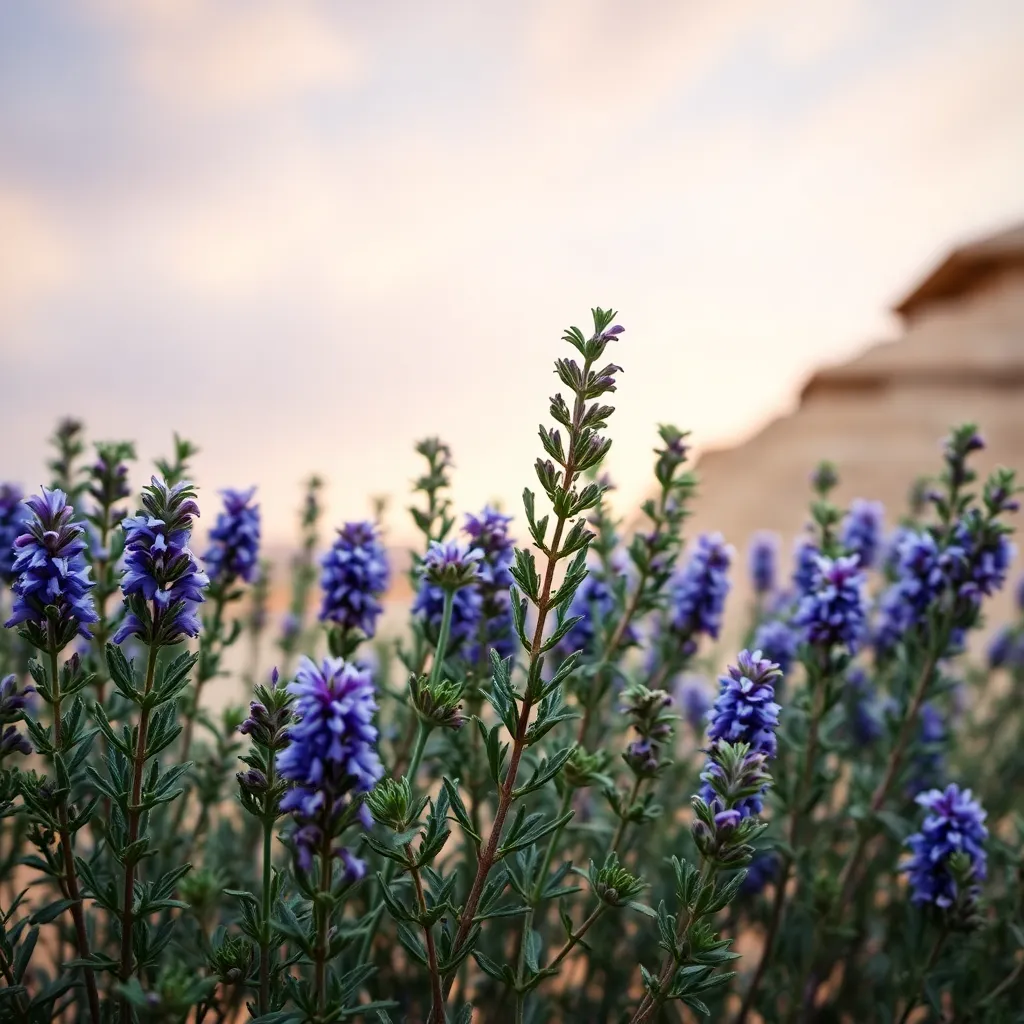The Healing Properties of Sacred Rosemary in Egypt
I. Introduction
Rosemary (Rosmarinus officinalis) has a rich historical significance in Egypt, where it has been revered not only for its culinary uses but also for its medicinal properties. Ancient Egyptians recognized the importance of sacred herbs in their culture, using them in rituals, medicine, and as symbols of spiritual significance. This article aims to explore the multifaceted role of rosemary in ancient Egypt, examining its healing properties, historical context, and modern applications.
II. Historical Context of Rosemary in Ancient Egypt
The role of rosemary in Egyptian mythology and rituals is well-documented. It was often associated with purification and protection, believed to ward off evil spirits and promote well-being.
- Mythological Significance: In ancient myths, rosemary was linked to the goddess Isis, known for her healing abilities.
- Ritualistic Use: Rosemary was used in various ceremonies, including funerary rites, to honor the dead and ensure safe passage to the afterlife.
Archaeological findings have uncovered remnants of rosemary in tombs and temples, indicating its esteemed position in ancient Egyptian life. Traditional beliefs surrounding rosemary emphasized its healing powers, with many considering it a gift from the gods.
III. Chemical Composition of Rosemary
The healing properties of rosemary can be attributed to its rich chemical composition. Key compounds found in rosemary include:
- Antioxidants: Rosemary is high in rosmarinic acid and carnosic acid, which provide potent antioxidant effects.
- Essential Oils: The essential oils in rosemary contain compounds such as 1,8-cineole and camphor, known for their therapeutic properties.
These compounds contribute to rosemary’s healing capabilities by combating oxidative stress, reducing inflammation, and enhancing cognitive function. When compared to other sacred herbs used in ancient Egypt, rosemary stands out due to its unique aromatic profile and diverse applications.
IV. Traditional Healing Practices Utilizing Rosemary
Ancient Egyptian medicine was deeply intertwined with herbal remedies, and rosemary played a crucial role in this tradition. Some specific uses of rosemary in healing rituals include:
- Inhalation for Respiratory Issues: The aromatic properties of rosemary were used to alleviate respiratory ailments.
- Topical Application for Wounds: Rosemary-infused oils were applied to cuts and bruises to promote healing.
Case studies from ancient texts reveal the widespread application of rosemary in treating various conditions, showcasing its importance in the medical practices of the time.
V. Modern Applications of Rosemary in Egyptian Medicine
Today, the integration of ancient practices into contemporary herbal medicine continues to thrive. Scientific studies support rosemary’s health benefits, highlighting its potential in:
- Memory Enhancement: Research indicates that rosemary can improve cognitive function and memory.
- Anti-inflammatory Effects: Its compounds have been shown to reduce inflammation, making it valuable for various health conditions.
Popular forms of rosemary used today include:
- Essential Oils: Commonly used in aromatherapy for stress relief and mental clarity.
- Teas: Rosemary tea is consumed for digestive health and overall wellness.
VI. Rosemary in Rituals and Spiritual Practices
In addition to its medicinal properties, rosemary holds significant symbolic meaning in spiritual contexts. It is often associated with:
- Purification: Rosemary is used in cleansing rituals to purify spaces and individuals.
- Protection: Many believe that rosemary can protect against negative energies and enhance spiritual awareness.
Ritualistic uses of rosemary have persisted from ancient times to modern practices, illustrating its enduring significance. The connection between spirituality and healing properties is evident in how rosemary continues to be utilized in various spiritual traditions.
VII. Challenges and Preservation of Rosemary Traditions
Despite its rich heritage, the traditions surrounding rosemary face several challenges, including:
- Threats to Traditional Knowledge: The decline in traditional practices poses a risk to the preservation of knowledge regarding sacred herbs.
- Environmental Changes: Urbanization and climate change threaten the natural habitats of rosemary and other sacred herbs.
Conservation efforts are essential for safeguarding these precious resources. Initiatives focused on educating communities about the importance of preserving cultural heritage and healing practices are vital for the future.
VIII. Conclusion
In summary, rosemary holds a significant place in both the healing and cultural practices of ancient Egypt. Its historical context, chemical composition, and traditional uses reveal a rich tapestry of belief and practice that continues to resonate today. As we look to the future, the prospects for rosemary in medicine and spirituality remain promising. It is crucial to support further research and conservation efforts to ensure that the legacy of this sacred herb endures for generations to come.




